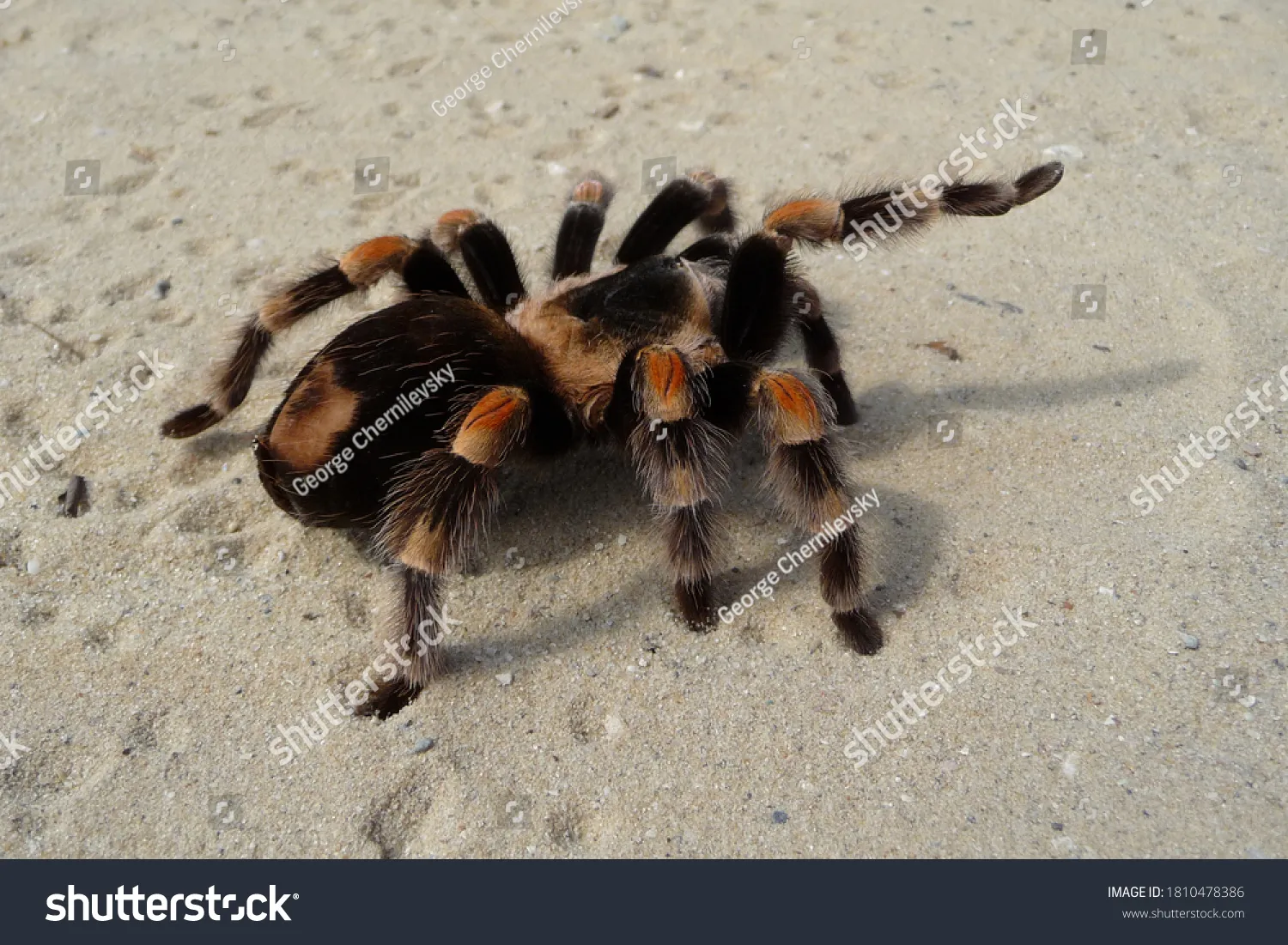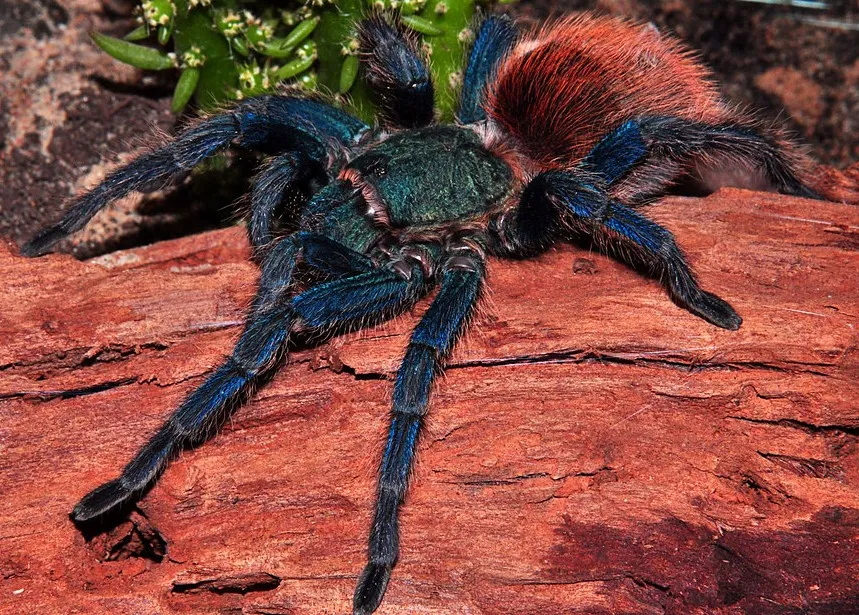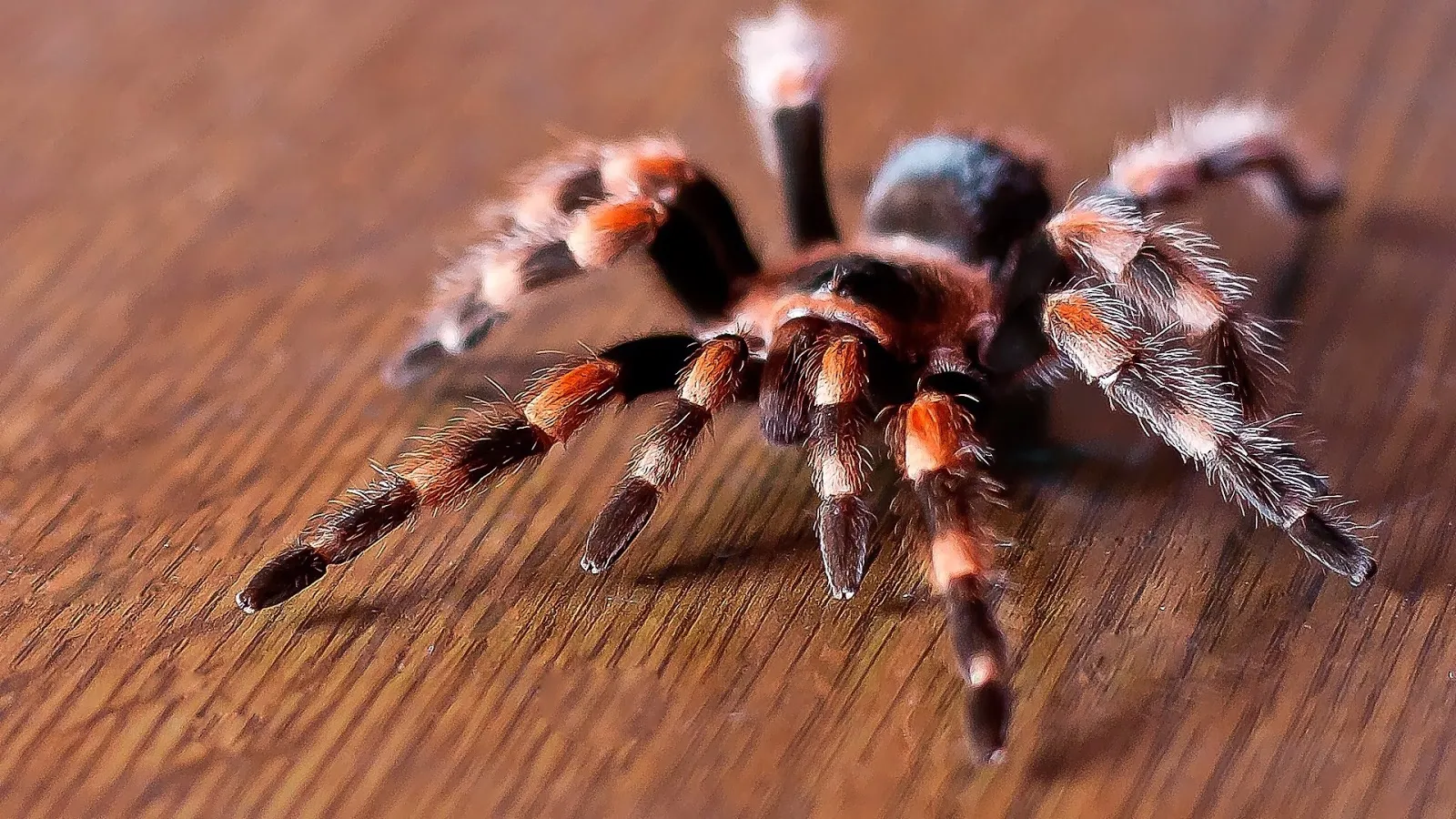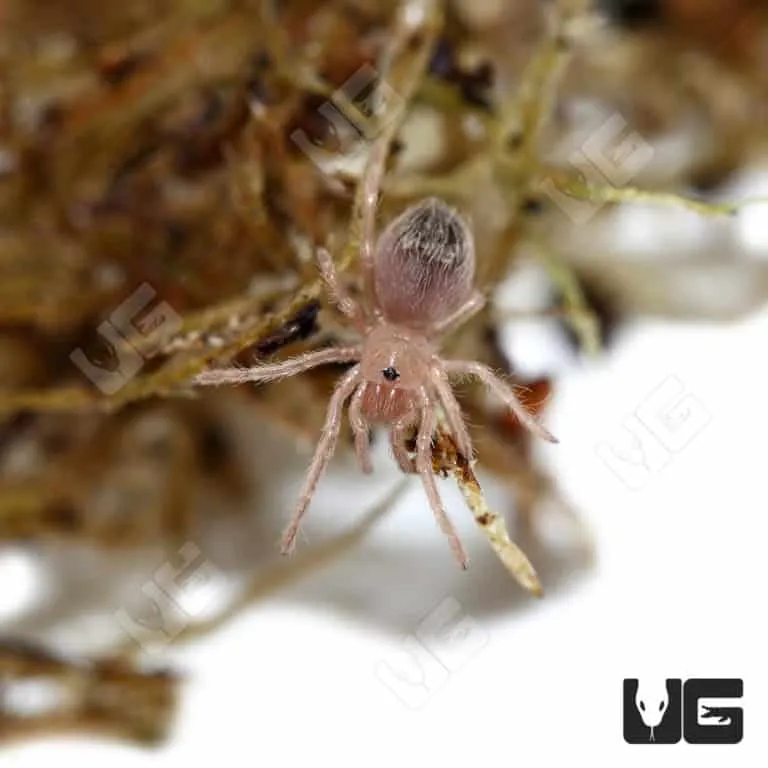What is a Red Bottom Tarantula?
The Red Bottom Tarantula, scientifically known as Brachypelma hamorii (formerly Brachypelma boehmei), is a stunning and relatively docile species of tarantula native to the dry scrublands and coastal regions of Mexico. They are highly sought after in the pet trade due to their striking appearance and manageable temperament. These spiders are known for their vibrant coloration and relatively calm demeanor, making them popular among both novice and experienced tarantula keepers. Observing these creatures in their habitats can be an amazing experience as well.
Appearance and Identification
Identifying a Red Bottom Tarantula is quite straightforward, thanks to their distinct markings. Adults have a dark body, typically black or dark brown, with striking reddish-orange hairs covering the abdomen. The combination of these colors gives them their common name. The carapace (the upper shell of the cephalothorax) is usually a lighter shade of brown, and the legs have alternating bands of orange and black. Juvenile tarantulas may have less vibrant colors, but the characteristic pattern becomes more pronounced as they mature. Careful observation is key to distinguishing them from other tarantula species.
Size and Characteristics

Red Bottom Tarantulas are medium-sized spiders. Females tend to be larger than males, with a leg span that can reach up to 6 inches (15 cm). Males are typically smaller, with a leg span of around 4-5 inches (10-12 cm). These tarantulas are known for their longevity; females can live for 20-25 years, while males have a shorter lifespan, typically 5-7 years. They are also relatively slow-growing, which adds to their appeal as pets, as it allows keepers to enjoy them for a long time. These spiders are equipped with strong chelicerae (fangs) which they use to capture and subdue their prey.
Habitat and Distribution
Understanding the natural habitat of the Red Bottom Tarantula is crucial for providing appropriate care in captivity. These spiders are native to specific regions, and mimicking their natural environment is key to their well-being. Their survival depends on their ability to adapt and thrive within a suitable setting.
Natural Habitat
Red Bottom Tarantulas are primarily found in the dry scrublands and tropical deciduous forests of the Pacific coast of Mexico. They prefer habitats with arid conditions and moderate temperatures. They are terrestrial spiders, meaning they spend most of their time on the ground. They often create burrows under rocks, in soil, or among the roots of plants, which they use for shelter from predators and the harsh climate. The burrows also provide a stable temperature and humidity level. Understanding their natural habitat provides invaluable insights into caring for these creatures.
Geographical Range

The geographical range of the Red Bottom Tarantula is limited to specific areas along the Pacific coast of Mexico, primarily in the states of Guerrero and Michoacán. Within this region, they can be found in areas with suitable soil conditions and vegetation. Due to habitat loss and over-collection for the pet trade, their populations have been declining. Conservation efforts are underway to protect their natural habitat and ensure their survival in the wild. Knowledge of their distribution is useful in the conservation efforts.
Diet and Feeding Habits
Red Bottom Tarantulas are opportunistic predators, and their diet plays a critical role in their health and growth. Providing a balanced diet in captivity involves understanding their natural feeding habits.
Prey and Diet in the Wild
In the wild, Red Bottom Tarantulas primarily feed on insects, such as crickets, beetles, and grasshoppers. They are ambush predators, meaning they wait for prey to come within striking distance before they pounce. They inject venom into their prey to paralyze it, and then use their chelicerae to crush and consume the meal. They may also consume small lizards or rodents. The natural diet provides the nutrients and energy required for survival and growth.
Feeding in Captivity

In captivity, Red Bottom Tarantulas are typically fed a diet of live insects, such as crickets, roaches, and mealworms. The size of the prey should be appropriate for the tarantula’s size – generally, the prey should be no larger than the tarantula’s body. Feeding frequency depends on the tarantula’s age and size; juveniles should be fed more often than adults. It is important to ensure that the insects are gut-loaded (fed nutritious food) before being offered to the tarantula to provide optimal nutrition. Access to fresh water should always be available.
Behavior and Temperament
The behavior and temperament of the Red Bottom Tarantula are key factors that make them popular as pets. Understanding their defensive mechanisms and how they interact with humans is crucial for safe handling and enjoyment.
Defensive Mechanisms
Red Bottom Tarantulas have several defensive mechanisms. One of the most notable is their ability to flick urticating hairs from their abdomen. These hairs are irritating to the skin and eyes of potential predators and can cause a rash. They also possess fangs and can bite if provoked, although their venom is not considered medically significant to humans. They usually prefer to run and hide rather than bite. They are relatively docile and rarely bite unless they feel threatened or are mishandled.
Interaction with Humans

Red Bottom Tarantulas are generally considered to be docile and are not prone to biting. However, they should still be handled with caution. It is essential to move slowly and gently around them and to avoid any sudden movements that might startle them. When handling, it is important to be aware of their urticating hairs and to avoid touching them. Handling should be kept to a minimum, as it can stress the tarantula. The best way to interact with them is to observe them in their enclosure.
Conservation Status
The Red Bottom Tarantula faces various threats in the wild, which has led to conservation efforts to ensure its survival. Understanding the challenges they face and the measures being taken to protect them is important.
Threats to Survival
The main threats to the Red Bottom Tarantula are habitat loss due to deforestation and human development, and over-collection for the pet trade. Their limited geographical range makes them particularly vulnerable to these threats. Climate change may also pose challenges by altering their habitat and food sources. It is important to acknowledge the pressures these spiders face in their natural environment.
Conservation Efforts

Various conservation efforts are being implemented to protect the Red Bottom Tarantula. These include habitat preservation and restoration, regulation of the pet trade to prevent over-collection, and education programs to raise awareness about the importance of protecting these spiders. Captive breeding programs also play a crucial role in reducing pressure on wild populations. Efforts involving both habitat management and sustainable practices are critical to their survival.
Conclusion
The Red Bottom Tarantula is a fascinating species with a unique appearance and intriguing behavior. By understanding their needs and the challenges they face, we can contribute to their conservation and appreciation. Whether you’re a seasoned arachnid enthusiast or a curious newcomer, the Red Bottom Tarantula offers a glimpse into the captivating world of tarantulas.
